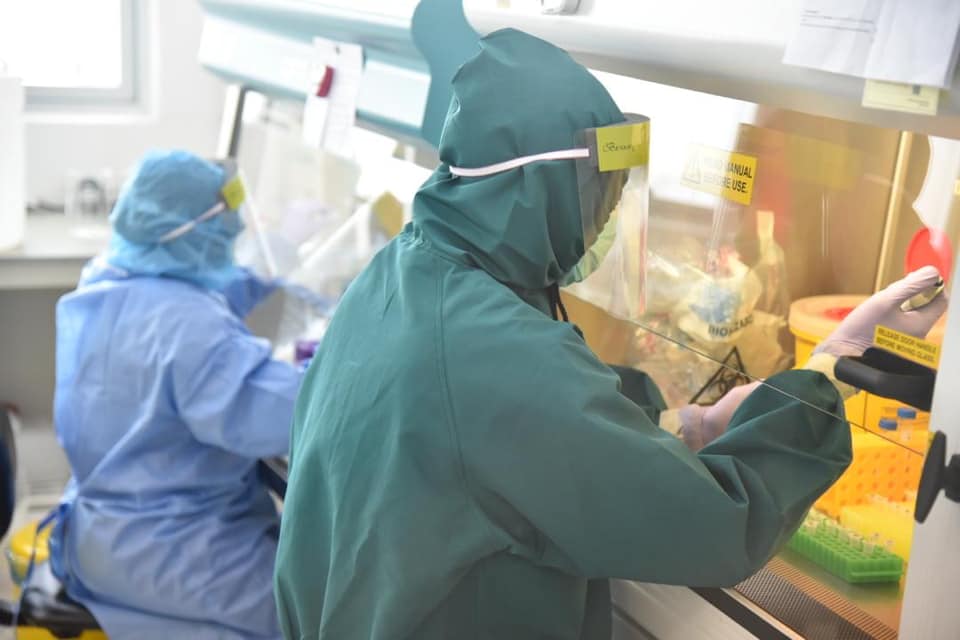KUALA LUMPUR, Sept 4 — The latest Covid variant, BA.2.86, has not met the criteria set by the United Kingdom Health Security Agency’s (HSA) for classification as a “variant of concern”.
As stated on the HSA website, the agency has explored various factors related to the fitness and spread of this variant and has determined that there is uncertainty regarding the impact of its mutations.
In a statement on their website, the HSA’s research and analysis report read: “The Variant Technical Group discussed whether the current surveillance context required an updated approach to designating and acting on variants. However, any such updated definition of a variant of concern would include a higher level of confidence on positive growth than is available at present for BA.2.86.”
According to a report by The Guardian, the BA.2.86 variant exhibits over 30 spike protein variations compared to the current predominant variant.
The World Health Organization (WHO) designated BA.2.86 as a “variant under monitoring” on August 18 due to its extensive mutations.
A “variant under monitoring” is the lowest of three levels of alert, below “variants of interest” and “variant of concern” that is the highest level of alert.
To date, only three Covid-19 variants — XBB.1.5, XBB.1.16 and EG.5 — are listed as “variants of interest”, with no new “variants of concern” identified by the WHO since the Omicron classification on November 26, 2021.
On August 29, the HSA conducted a meeting and assessment of the variant, revealing that it has been detected in multiple countries across continents, albeit at low prevalence among clinical cases or in wastewater.
On August 25, Dr Leshan Wannigama, a scientist at the Department of Infectious Diseases and Infection Control at Yamagata Prefectural Hospital in Japan, posted on X about his findings of the BA.2.86 variant in Thailand’s wastewaters.
According to the HSA, as of August 31, the genome sequence of BA.2.86 is available on the international genomic data-sharing platform, GISAID, originating from eight different countries: Denmark (10 cases), Sweden (four cases), America (four cases), Portugal (two cases), South Africa (two cases), Canada (one case), Israel (one case), and the UK (one case).
“Although an increasing number of countries are reporting detection, there is as yet no clear signal of growth within any of these individual countries,” read the HSA website.
The phylogenetic analysis (lines of descent and relationships) of the BA.2.86 variant reveals a single sublineage that primarily covers European cases, suggesting limited substructure.
In the context of the SARS-CoV-2 global phylogeny in 2023, BA.2.86 stands out as an outlier in terms of geographic distribution, deviating from the typical pattern seen in other nodes relative to the most recent common ancestor (tMRCA) of BA.2.86.
However, it is worth noting that BA.2.86 is not the most extreme outlier, and the analysis doesn’t account for countries detecting the variant through wastewater. Several additional countries have either formally or informally reported detecting BA.2.86 in wastewater, but there is no consistent international repository for wastewater genomic data.
Regarding its transmission, three hypotheses have been considered: the possibility of mass gatherings seeding multiple countries, ongoing outbreaks in countries lacking surveillance, or widespread community outbreaks going undetected by surveillance.
The phylogeny, however, does not strongly support the notion of widespread high-level community transmission.
The HSA has not drawn any conclusions about the variant’s fitness based on the available data. They emphasise that a wide range of possibilities, from less fit than other circulating variants to a large jump in fitness, remain possible.
The HSA said there is no laboratory data available.
To date, the UK has reported two additional cases of BA.2.86, one in England and the other in Scotland. The initial case in the UK was reported to be mildly unwell, the second case had no respiratory symptoms, and the third case displayed symptoms. All three cases were identified through hospital testing, and samples from the two most recent cases were sequenced as part of routine surveillance for hospital test-positive cases.
These samples are cultured in the UK, who are in contact with other international partners.
“Neutralisation and other phenotypic data is still likely to be one to 2 weeks away at minimum in the UK.”
According to the GISAID database of virus genome sequences, Malaysia sequenced and shared about 1.6 per cent of reported Covid-19 cases in the last 90 days, lower than Cambodia (18.1 per cent), Laos (22.9 per cent), Thailand (5.2 per cent), Brunei (6.7 per cent), and Singapore (2.5 per cent).








